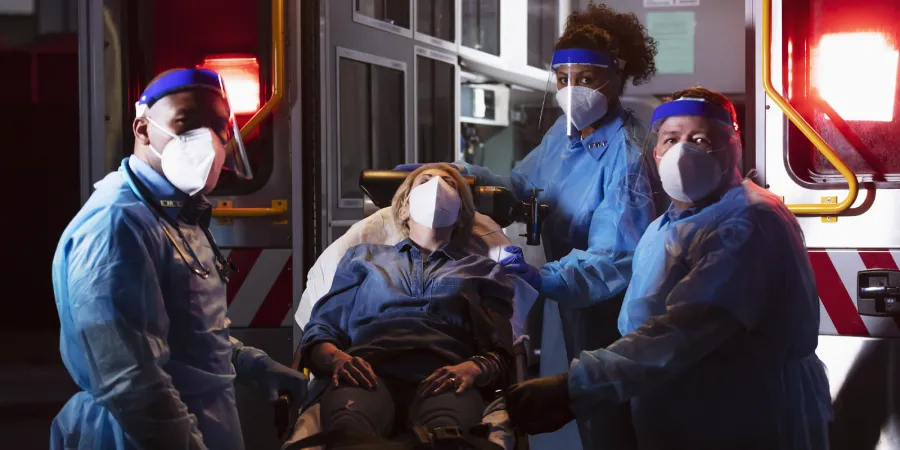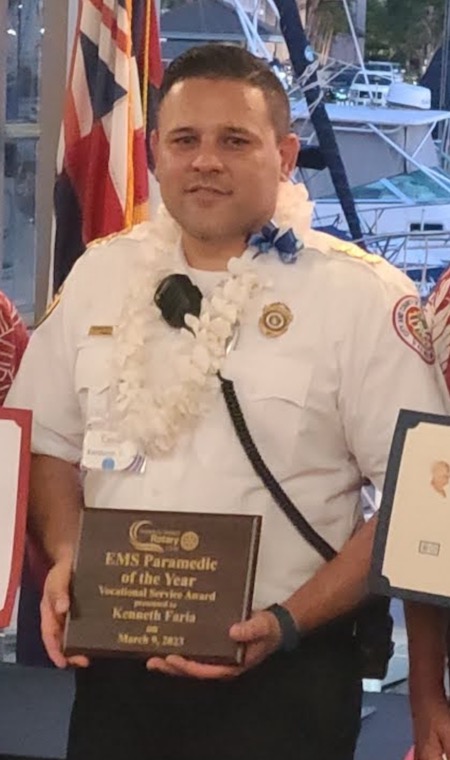Thanking EMS professionals is not enough; we must help them solve a staffing crisis

 [/caption]
[/caption]In his early 20s, Kenneth Faria was a flight attendant for American Airlines when a passenger needed emergency medical care and the crew used a defibrillator to save his life.
“After that experience, I was always a little bit curious about what else I could do for someone in an emergency,” Faria says.
That curiosity eventually led Faria to pursue a career in emergency medical services (EMS), and today he is EMS district chief for the Honolulu Emergency Services Department in Hawaii’s capital.
AFSCME members are celebrating National EMS Week, when we thank EMS professionals for the critical services and life-saving care they provide our communities every single day.
AFSCME President Lee Saunders issued a press statement to honor EMS workers, asserting that our communities “cannot thank them enough for their tireless service.” But to truly thank them we must do more. We must help them solve a staffing crisis that they cannot address single-handedly.
Faria loves serving the community where he was born and raised, and he has been working in EMS for 20 years. Just this week, he was reunited with a 95-year-old man whose life he helped save in April.
“In my 20 years, I was fortunate to have some success with the treatments that I provide,” Faria says humbly, when asked what motivates him to keep going. “To see a person awake and talking without any residual effects from the cardiac arrest is amazing, because you can see the image of their face when they were lifeless and now you get to see them with life.”
Faria also says there is “a big sense of pride” that comes with the job.
“When I respond to an emergency and arrive with all my tools, there is a strong sense of pride,” he says. “I know I can make a difference for this person. We have very good training, we pride ourselves on that. I like to welcome the challenge, figure out what’s going on, use my executive skills to change the outcome of what this individual is going through.”
But despite the satisfaction and happy endings, the calling of an EMS professional can be very challenging.
“So many times we try, and at the end, the outcome is not what we had wished for,” Faria says. “It’s weird, but the bad (cases) stay with you much longer than the good ones.”
EMS professionals routinely experience emotional and mental stress from their jobs. Such stress is often made worse by workplaces with high turnover and a shortage of staff. Within the last three years, Faria says, his department has hired 124 EMS workers and lost 117. Meanwhile, the emergency call volume keeps growing year after year.
“In Honolulu, we’re on a fast track to burnout,” he says.
A member and chief steward of United Public Workers (UPW/AFSCME Local 646), Faria says he and his co-workers are working through their union to address these and other workplace issues.
Such challenges are faced by EMS professionals all over the country. According to the U.S. Bureau of Labor Statistics, over the next decade or so, the number of EMS job openings will grow by about 20,000 annually, which is not enough.
Nationwide, the median pay for EMTs and paramedics in 2021 was just $17.76 an hour, according to the bureau. That’s just above minimum wage in many cities.
That’s why AFSCME has launched Staff the Front Lines, an initiative to address the staffing crisis facing public service workers. As part of this effort, our union will help recruit and retain talented public service workers in communities across the country.
“There’s no sugarcoating it: the increase in EMS vacancies will mean an increase in lives lost,” Saunders said, adding that our communities “have the resources to solve this problem.”
Successfully addressing staffing shortages, Saunders said, “starts with getting EMS workers the pay they deserve, along with improved safety standards and a protected voice on the job.” This would help turn EMS “into a more sustainable career, keeping workers from leaving this honorable field and attracting other skilled, passionate individuals.”
